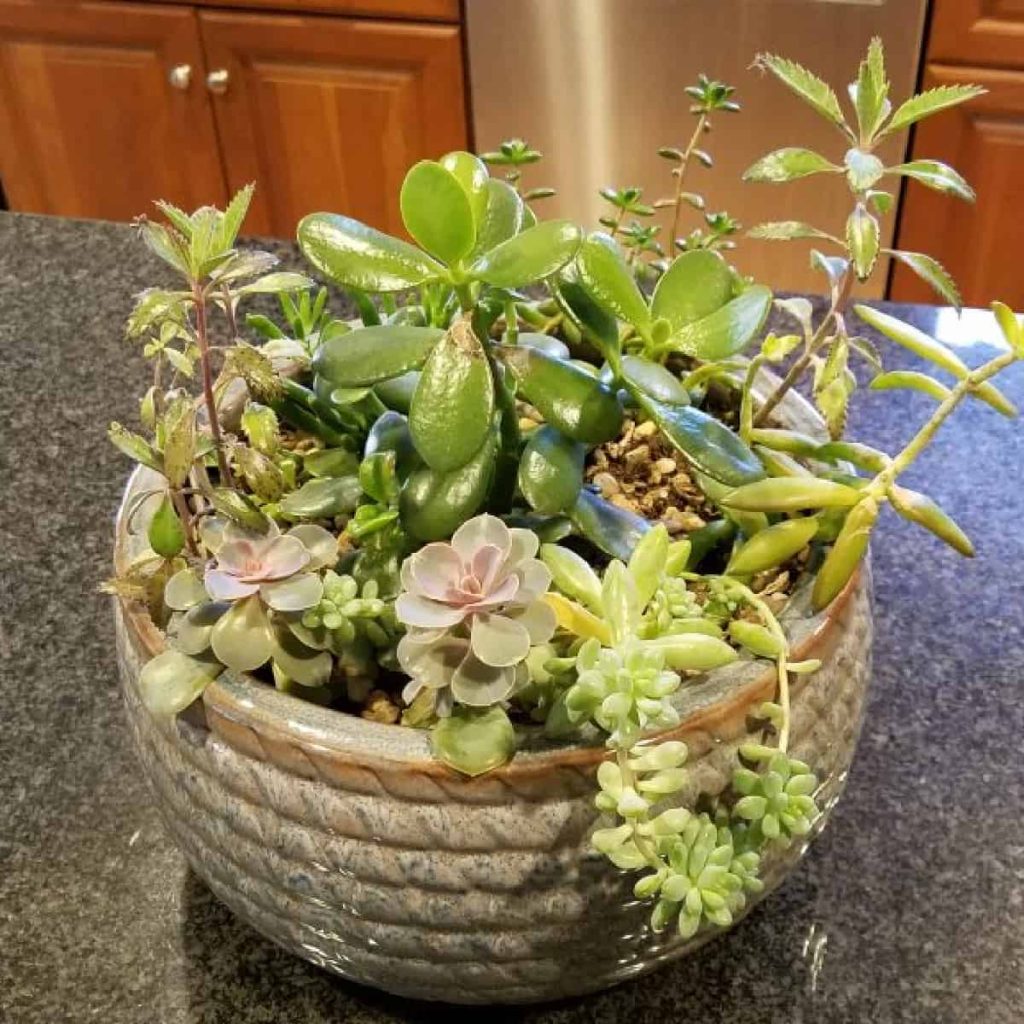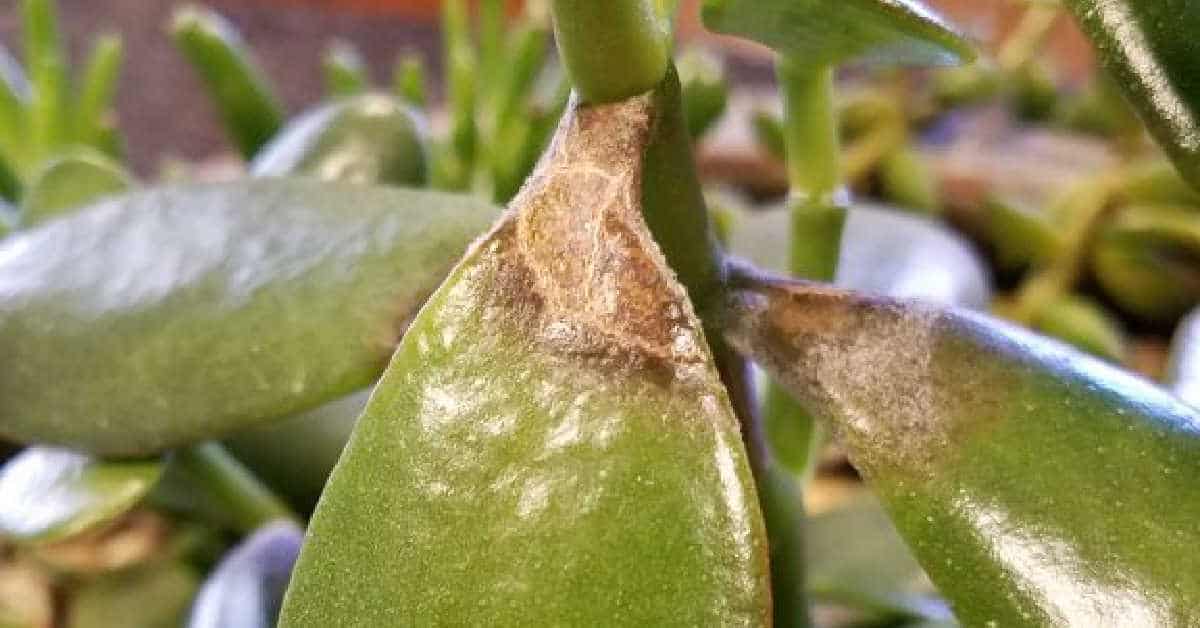My brother emailed me these pictures and asked, “What are brown spots on succulents? Why does my succulent have brown spots? How do I get rid of them?”
We both love our house plants, so I dug into his question and found the answer. It seems to be a common problem among succulents.
Brown Spots on Succulent Plants
My brother Steve planted this lovely succulent garden:

But he asked a great question: Why are the leaves of this succulent turning brown?
He sent me close-ups to show me what he meant:

Possible Causes of Brown Spots on Succulent Plants
Typically, brown spots on succulents occur for one of three reasons:
- Overwatering
- Fungal diseases
- Minerals in the water system
Looking at my brother’s little succulent garden, my best guess without seeing the plant in person is that he’s just over watering them slightly. The corky brown spot, which may feel mushy or softer to the touch than the surrounding leaves, provides confirmation that too much water caused the brown spots. African violets, which I raise, are also prone to problems from overwatering.
Minerals in the Water
Minerals in the water system also cause leaf discoloration, but the garden center where I worked in the 1990s isn’t far from where my brother lives now, and the water system is fine. The water treatment includes chlorine and fluoride, but the water tends to be free from minerals that leave such deposits. You can collect and use rainwater for house plants in areas with high-mineral-content water.
Fungal Disease
Fungal disease also remains a possibility, and without seeing the succulent plant in person, it’s also hard not to rule that out. But, usually, in fungal diseases, I’ll see multiple plants in a terrarium or pretty little planter like this one affected similarly. He confirmed the brown spots only affect one plant. My guess (and diagnosis): he’s watering the dish garden near that spot, and the plant absorbs just a bit more water than its companions. Excess water damages the vascular tissue in the leaves, leading to brown spots.
Succulent Plant Care
The popularity of succulent plants soared over the past several years, and with good reason. They’re prettier (in my opinion) than cacti but require similar growing conditions. Better still: no thorns or spines!
Succulent dish gardens such as the one my brother shared provide beautiful focal points in the home. They need full sunlight and soil that drains well. Always allow succulent plants to dry out completely between watering.
These little plants provide great house plants for people who aren’t home a lot or who forget to water. Unfortunately, American Veterinarian does say they can be toxic to pets, so if your cat or dog nibbles on house plants, keep the plants away from the pets or avoid them altogether.




